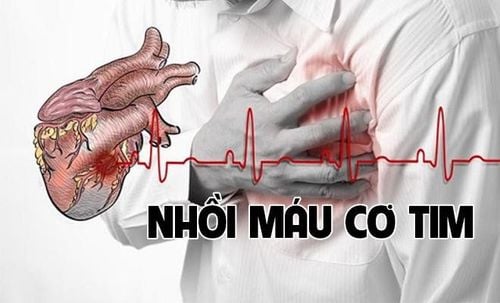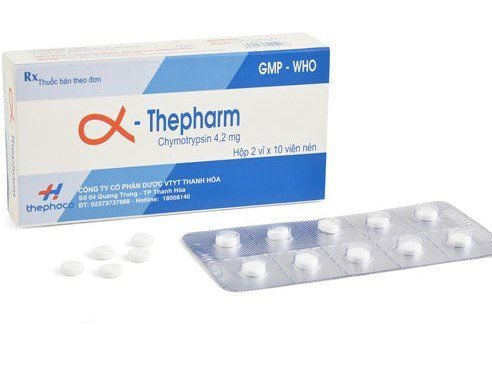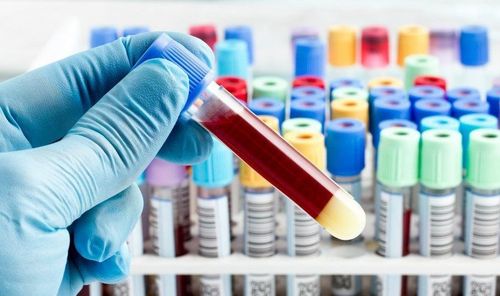This is an automatically translated article.
Pradaxa 110 is manufactured and registered by Boehringer Ingelheim pharma GmbH & Co.KG Company, belongs to the list of anticoagulant, antiplatelet and fibrinolytic drugs. So what is Pradaxa and in what cases is it used?
1. What is Pradaxa 110?
Pradaxa 110mg contains the main active ingredient is Dabigatran with 110mg concentration and excipients just enough for 1 tablet, made in the form of hard capsules, packaged in boxes of 6 blisters, 3 blisters, 1 blister x 10 tablets, or 1 plastic bottle Contains 60 tablets.
2. Uses of Pradaxa 110
2.1.Uses of the drug Pradaxa 110 Used in the prevention of unwanted blood clotting thanks to the effect of destroying the clot structure of the active ingredient Dabigatran. Pradaxa 110 mg may also be used for the prevention of VTE and systemic embolism in adult patients with nonvalvular atrial fibrillation (due to one or more risk factors such as transient ischemic attack). past, stroke, people 75 years of age or older), stroke due to the presence of blood clot in people with pulmonary embolism, leg vein thrombosis, atrial fibrillation, diabetes mellitus, hypertension. Pradaxa 110 mg was used to reduce the risk of recurrent pulmonary embolism or deep vein thrombosis in previously treated patients. 2.2. Indications of the drug Pradaxa 110 Pradaxa 110 is indicated for use in the following cases:
Pradaxa 110mg is used to prevent venous thromboembolic events in adults who have undergone surgery. Total knee or hip replacement.
Prevention of systemic embolism and stroke in patients with nonvalvular atrial fibrillation and at least one of the following risk factors:
Age 75 years or older. Symptomatic heart failure Left ventricular ejection fraction <40% History of systemic embolism, stroke, transient ischemic attack. Patients with 1 of the following diseases: coronary artery disease, diabetes mellitus, hypertension with age 65 or older. 2.3. Contraindications of Pradaxa 110 The use of Pradaxa 110 is contraindicated in subjects with hypersensitivity to any component of the drug, including active ingredients and excipients. The patient was using systemic ketoconazole without concomitant treatment with Pradaxa 110. Patients with bleeding manifestations or bleeding sites, prolonged clotting time due to spontaneous or drug use, organ damage at high risk of bleeding (including hemorrhagic stroke within 6 months or more). back), gastrointestinal ulcers. Patients with liver failure, kidney failure.
3. Usage and dosage of Pradaxa 110
3.1.How to use Pradaxa 110 by mouth, can take Pradaxa 110mg at any time (before meals, during meals and after meals). If gastrointestinal side effects occur, it is recommended that patients take Pradaxa 110 mg with or immediately after a meal, and possibly with a proton pump inhibitor such as omeprazole. . Patients should pay attention to take the whole tablet, do not open the capsule.
3.2. Dosage For adults: for prevention of venous thromboembolic events after hip replacement surgery: take 1 110mg tablet within 1 to 4 hours after surgery, then take it continuously within 1 hour after surgery. 28-35 days, take once a day x 2 tablets. After knee replacement surgery: similar to hip replacement, take 1 110mg tablet within 1 to 4 hours after surgery, take it for 10 days, take 1 x 2 tablets. If hemostasis is not assured, the initiation of treatment should be delayed. On the day of surgery, if the patient cannot use the drug immediately, then start 2 110mg tablets, 1 time a day. For patients with moderate renal impairment, it should be reduced to 150mg per day. In the prevention of systemic embolism, stroke, and mortality from vascular causes in patients with non-valvular atrial fibrillation: 1 to 2 times daily x 150 mg/time, the treatment should be lifelong. In patients at increased bleeding risk, the dose should be reduced to 110 mg twice daily. Note: The above dosage is for reference only. In addition, it is not recommended for use on people under 18 years of age. Therefore, the patient should strictly follow the instructions of the doctor or pharmacist.
4. Undesirable effects of Pradaxa 110mg
When treated with Pradaxa 110mg, patients may experience the following undesirable effects:
Immune system disorders: urticaria, pruritus, rash, angioedema, bronchospasm, reactions defense. Nervous system disorders: intracranial hemorrhage. Disorders on the lymphatic system are blood: thrombocytopenia, anemia. Vascular disorders: bleeding, hematoma. Chest, respiratory, mediastinal disorders: hemoptysis, nose bleeding Gastrointestinal disorders: abdominal pain, dyspepsia, diarrhea, nausea, gastritis, vomiting, gastroesophageal reflux , dysphagia, stomach ulcers including esophageal ulcers, gastrointestinal bleeding. Skin and subcutaneous tissue disorders (causing skin hemorrhage), musculoskeletal and connective tissue disorders (joint hematomas), systemic and urinary system disorders (urogenital haemorrhage), local site of use (hemorrhage at the catheter site, at the injection site). Poisoning, injury or complications after the procedure: bleeding at the incision site, bleeding from trauma, postoperative anemia, post-procedural hematoma, exudative wound. If during the course of taking the drug, the patient notices abnormal signs, it is necessary to notify the doctor immediately for timely treatment.
5. Pradaxa 110mg . drug interactions
Drugs during use may occur drug interactions when combined with Pradaxa 110mg:
Interaction P - glycoprotein. P-gp inhibitors. Contraindicated to use Pradaxa 110mg with drugs such as: Ketoconazole, itraconazole, Dronedarone, Glecaprevir/Pibrentasvir, Cyclosporine.
Tacrolimus should not be used at the same time as Pradaxa 110mg.
Care should be taken in case of use with: Verapamil, Quinidine, Clarithromycin, Amiodarone, Posaconazole, Ticagrelor.
Touch P – gp.
Concurrent use of: Carbamazepine, Rifampicin or Phenytoin should be avoided. When using these drugs at the same time as Pradaxa 110mg will reduce Dabigatran concentrations.
Protease inhibitors such as Ritonavir
Substrate P – gp: Digoxin.
Anticoagulants and antiplatelet medicinal products: Heparin, vitamin K antagonists, and antiplatelet medicinal products such as ticlopidine receptor antagonists, GPIIb/IIIa, prasugrel, Dextran, Ticagrelor, and Sulfinpyrazone.
6. Notes when using Pradaxa 110
During the use of Pradaxa 110, the following issues should be noted:
For pregnant women: Do not use Pradaxa 110mg on this subject. For nursing mothers: it is necessary to discontinue breastfeeding while using Pradaxa 110mg. Pradaxa 110 is not expected to affect the subject's ability to drive and use machines. Pradaxa 110 is manufactured and registered by Boehringer Ingelheim pharma GmbH & Co.KG Company, belongs to the list of anticoagulants, antiplatelet and fibrinolytic drugs. This is a prescription drug, so patients need to use it exactly as recommended by the doctor, professional pharmacist.
Follow Vinmec International General Hospital website to get more health, nutrition and beauty information to protect the health of yourself and your loved ones in your family.
Please dial HOTLINE for more information or register for an appointment HERE. Download MyVinmec app to make appointments faster and to manage your bookings easily.













